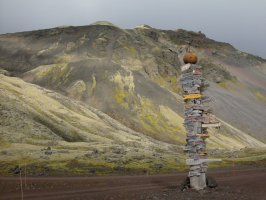Top 10 Most Beautiful Historical Sites in Norway
Norway, which occupies the westernmost section of Scandinavia, is a lovely and primarily mountainous country with fjords and glaciers, as well as a deep and ... read more...fascinating history. Nearly 6,000 years ago, people settled near the current capital of Oslo, as well as adjacent coastal locations that became the cities of Bergen and Trondheim. Until the Viking era, when Norse pirates began exploring – and attacking – Britain, Western Europe, Russia, Iceland, and Greenland, Norwegians relied heavily on fishing and farming. Norway was ruled by its neighbors Sweden and Denmark during the Middle Ages, and it was not until 1905 that it gained independence and became a great naval power. Norway has a tremendous choice of historic attractions to see, from the unusual design of medieval stave churches to the location of terrifying witch trials in the 17th century. Here are ten of the most beautiful historical sites in Norway to get you started.
-
The construction of the Norwegian Royal Palace (Det Kongelige Slott) in Oslo, Norway began on October 1, 1825, and was completed in 1849. The palace was intended to be a house for King Carl Johan, but it was only built after his death, therefore it would never be used for that purpose.
The Norwegian Royal Palace has undergone a variety of adjustments and changes over the years to make it more livable. The changing of the guard takes place every day at 1:30 p.m., and guided tours of the palace run about an hour.
Prior to the completion of the palace, Norway's royal family stayed in Paléet, a splendid townhouse bequeathed to the state by wealthy businessman Bernt Anker in 1805. Paléet was used by the viceroys of Norway in the latter years of Norway's union with Denmark, and by 1814, it was home to Christian Frederick, Norway's first sovereign king.
When King Carl Johan visited Oslo, he stayed in Paléet as both crown prince and king. Carl Johan, on the other hand, desired a purpose-built royal dwelling, and work on the new royal palace began in October 1825, when the monarch lay the foundation stone. The stunning new palace was created by Danish-born architect Hans Linstow and features a stuccoed brick facade. The palace boasted 2 large wings and was 3 stories high.
With its 6 classical columns and sweeping wings, the Norwegian Royal Palace, which is surrounded by the Slottsparken, is difficult to miss. The royalty, who work and live there, uses the Royal Palace on a daily basis. As a result, the palace is also used to receive foreign heads of state, as well as host audiences and official banquets. The Royal Palace is open to the public throughout the summer.
Location: Oslo, Norway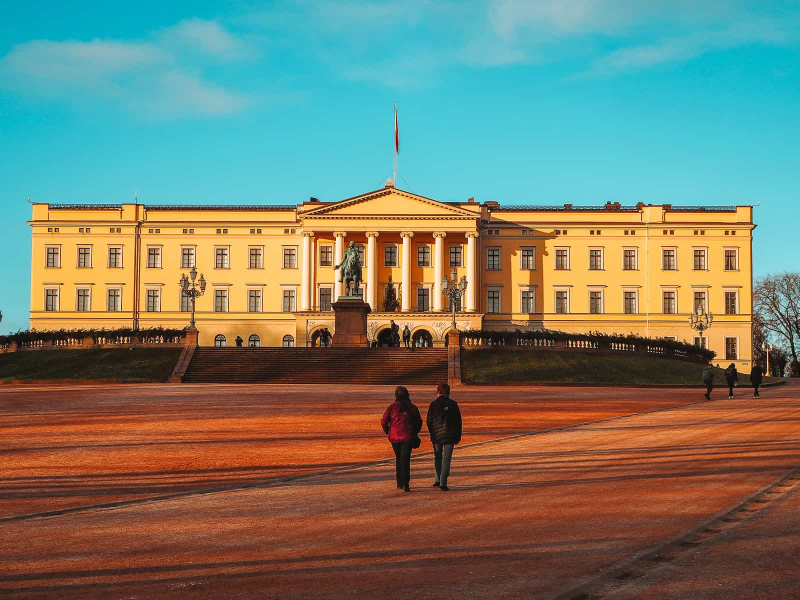
Photo: thirdeyetraveller 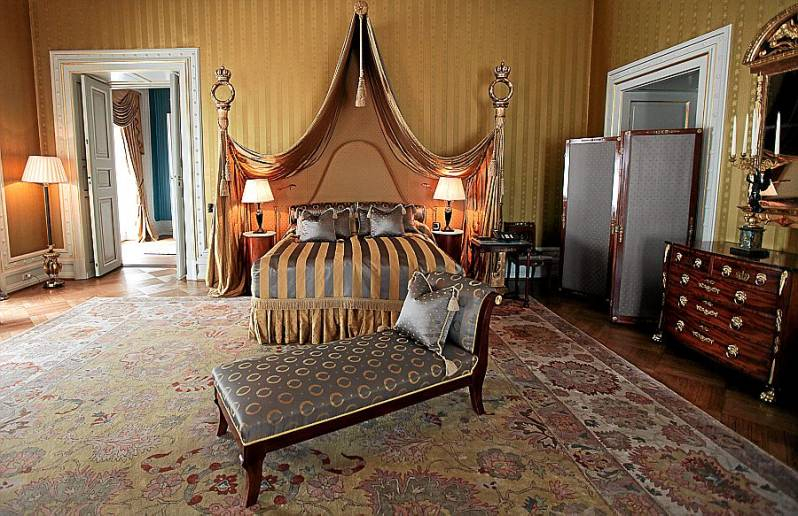
Photo: norwegianamerican -
Oslo Cathedral (Oslo Domkirke) is a cruciform-shaped church built in the Dutch Baroque style in the 17th century. The foundations for Oslo Cathedral were laid in 1692, but it wasn't consecrated until November 7, 1697, and it was initially known as the Church of Our Saviour. Oslo had two cathedrals prior to the construction of Oslo Cathedral: one from the 12th century and the other from the first part of the 17th century.
Heinrich Ernst Schirmer, a German-born architect, designed the restoration between 1848 and 1850. It was also rebuilt in 1950, just in time for the city's 900th anniversary, with the neo-Gothic interior removed and the original baroque style and furnishings restored.
It was also closed for restoration in 2006, and it reopened in April 2010 in the presence of King Harald V of Norway and the Norwegian royal family, who, along with the Norwegian government, use the cathedral for weddings and funerals, with Prince Haakon and Princess Mette-Marit Tjessem Hiby marrying there in 2001.
Today, tourists can marvel at the magnificent cathedral, which represents a fusion of Oslo's old and new history, architecture, and art. Originals include the pulpit, altarpiece, and organ font with acanthus carvings. Hugo Lous Mohr painted the enormous ceiling murals between 1936 and 1950, and Emanuel Vigeland finished the stained-glass windows. You have to see it direct to understand why it is listed as one of the most beautiful historical sites in Norway.
Location: Oslo, Norway
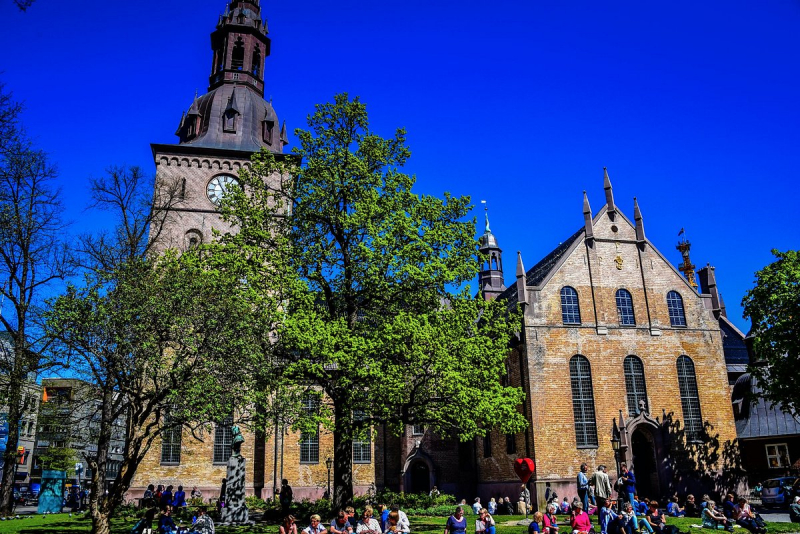
Photo: tripadvisor 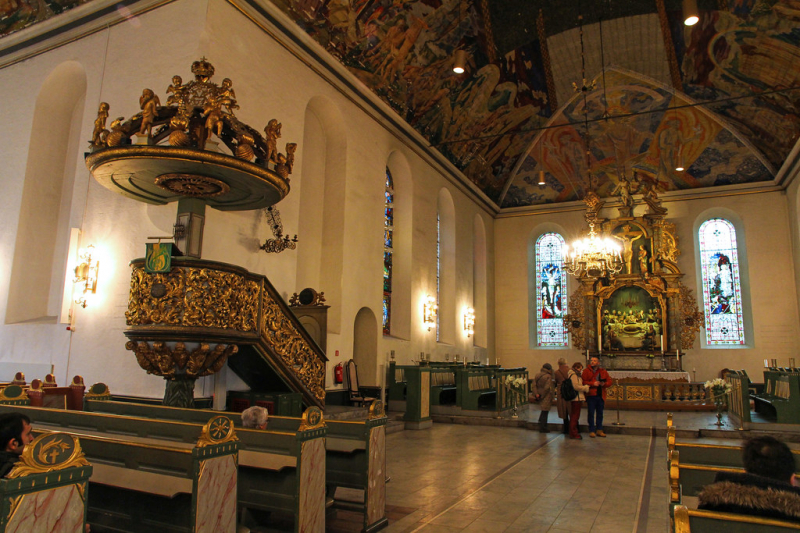
Photo: flickr -
Since the 14th century, Akershus Fortress (Akershus Festning) has served as a significant fortress and royal home in Oslo, Norway. Various personalities, including King Christian, have left their imprint on Akershus Fortress over the years, albeit it was neglected in the 17th and 18th centuries. Akershus Fortress, which has been fully rebuilt, is a famous tourist destination as well as a location for formal government and state functions.
It was begun in 1299 by King Hakon V to replace Tnsberg as one of Norway's most important fortresses. It is also known as Akershus Castle (Akershus Slott). In reaction to prior raids on Oslo by a Norwegian nobleman, Earl Alv Erlingsson of Sarpsborg, Hakon had Akershus Fortress erected. Following the attack, it was evident that Oslo need a more robust defensive core.When the Swedish attacked and gained the kingdom in 1308, the stronghold experienced its first fight. In 1523, Swedish forces attacked Akershus again, but were pushed out by Oslo inhabitants, who set fire to their own homes around the citadel. The strategic location of Akershus Fortress on the coast provided Norway with a significant advantage in protecting maritime trade during the early modern period.
Akershus Fortress has a lot to offer today. The castle houses everything from medieval Danish-Norwegian royalty's residential rooms to dark dungeons and the castle church, which is now a military church. The Armed Forces Museum and Norway's Resistance Museum are both located at Akershus Fortress, which is particularly relevant given the site's ties to the Nazi occupation.Location: Oslo, Norway
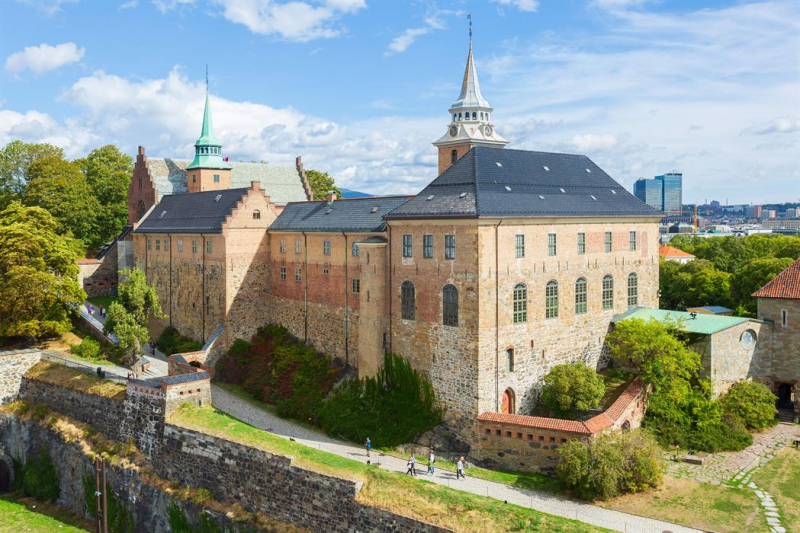
Photo: visitoslo 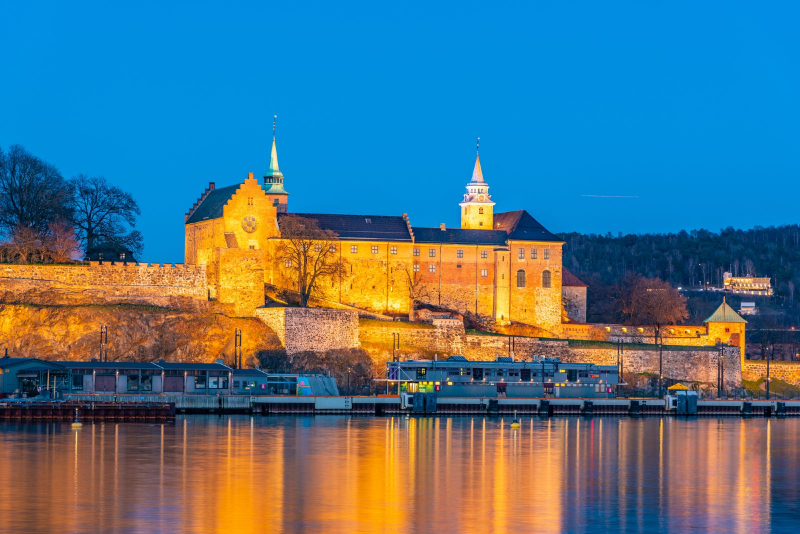
Photo: lifeinnorway -
Urnes Stave Church (Urnes Stavkirke) in Norway is the only stave church to be designated as a UNESCO World Heritage Site because it is the best-preserved and oldest surviving example of medieval wooden building. It is now one of Norway's most visited tourist destinations.
Urnes Stave Church is the oldest and most elaborately decorated stave church in Norway. The church was erected on the site of two former churches in around 1132 and still exists in its original location along the Lustrafjorden, Norway's longest and deepest fjord.
The church is a magnificent example of traditional Scandinavian timber architecture, combining Celtic art, Viking traditions, and Romanesque spatial systems. Indeed, during the Middle Ages, the church was one of the most elaborate and highly accomplished types of timber architecture in North-Western Europe.
A Cavalry group guards the choir doorway, two Limonges enameled bronze altar candelabra, and a chair made entirely of worked spindles are among the medieval furnishings.
Since the parish of Urnes was abolished in 1881, the church has been out of service. Only rare occasions, such as baptisms and weddings, are now celebrated with it.
The church has evolved in style over time as a result of religious and preservation interventions and restorations; however, it remains one of Norway's most striking contributions to world heritage and architecture, having been designated a UNESCO World Heritage Site in 1979.
The church is now one of Norway's most visited tourist attractions. It is open every day from 10.30 a.m. to 4.30 p.m. and offers guided tours. Weddings and baptisms are among the services that are held on occasion. Due to tourism and climate change, there are fears for the church's structural integrity in the future.
Location: Ornes, Norway
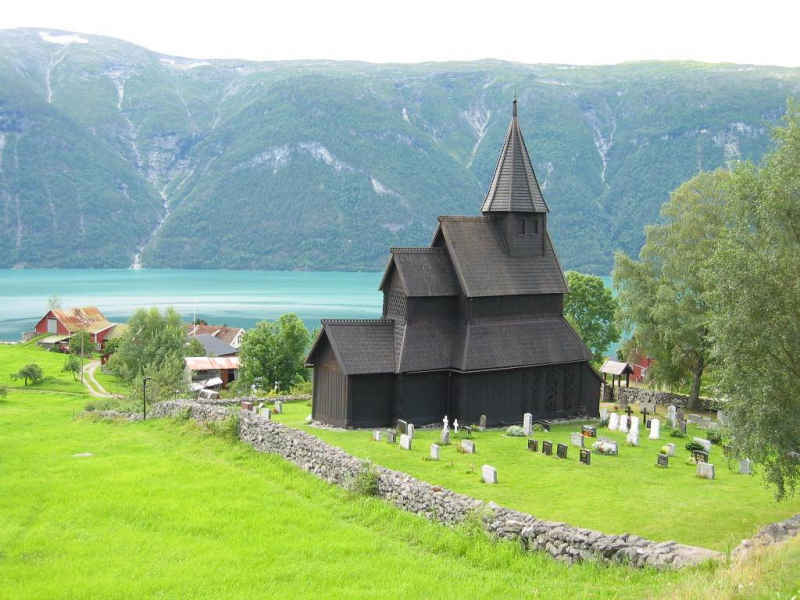
Photo: wikipedia 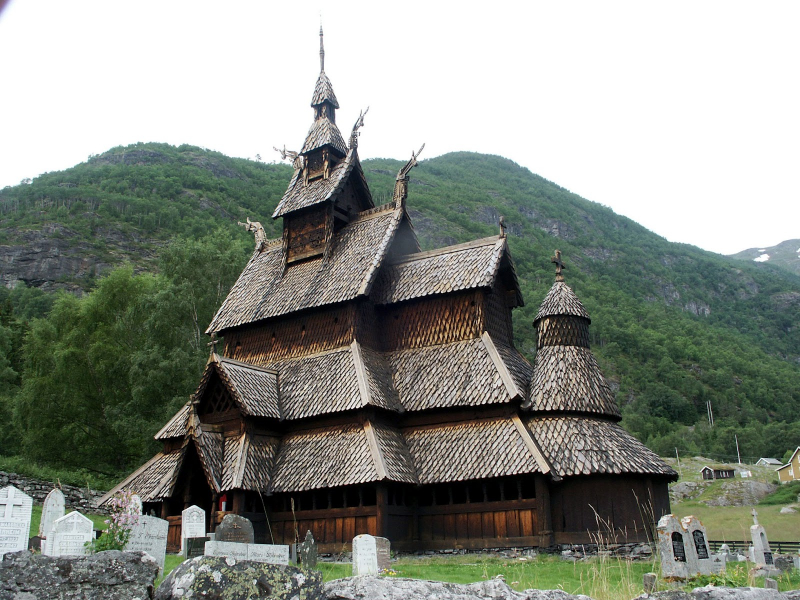
Photo: weloveyatours -
The Kristiansand Cannon Museum is located on the site of the Mvik Fort in Norway, which was built by the Germans during their occupation of Norway and Denmark during WWII. Today, the site serves as a museum and houses one of the world's largest land-based weapons.
The construction of this fortified fortress began in 1941, and the entire complex took several years to finish. It was erected in a strategic location with the goal of blocking the Skagerrak strait and the seaways of Eastern Norway, thus cutting off the Allies' supply lines.
These coastal defenses, known to the Germans as Batterie Vara, originally housed four enormous cannons, but only one survives today at the Kristiansand Cannon Museum. The barrel of the gun is over 20 meters long and weighs 110 tons. Mvik Fort had sixteen lesser cannons, as well as bunkers, defended tunnels, and a military barracks, in addition to the larger batteries.
The station was handled by the Norwegians after the war until 1959, when it was closed and much of the equipment, including the three additional weapons, was sold for scrap. The fort was reopened as the Kristiansand Cannon Museum in 1993 after restoration work in the 1990s.Visitors may now tour the entire complex, go through bunkers and tunnels, and, of course, see the main gun, which is still in its original casement. The 'Fortress Trail' leads visitors around the complex and contains a number of exhibits that describe the stronghold's history and operation.
Location: 4624 Kristiansand S, Norway

Photo: erih 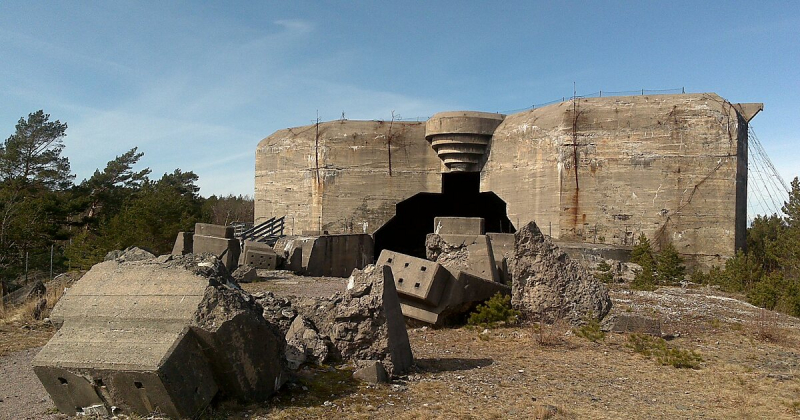
Photo: travel.sygic. -
Nidaros Cathedral in Trondheim, considered a national shrine, was built over the burial site of Olav Haraldsson, afterwards St. Olav, Norway's first Christian ruler. Nidaros Cathedral was created in its original form in the second half of the 11th century, and building lasted for at least a hundred years.
St. Olav, the Viking monarch who brought Christianity to Norway, is buried underneath the church. During the Middle Ages, a silver coffin containing St. Olav's remains was placed on the cathedral's high altar.
The shrine, however, was transferred to Denmark during the Reformation to be transformed into silver coins, and Olav's ashes were buried in a secret location within the church. No one knows where it is to this day.
Work on the cathedral began around 1070 and was completed around 1300. The cathedral was in bad shape after many fires and a lack of care in the Middle Ages. Large-scale restorations began in 1869, and the cathedral is now restored to its former glory.
The stained-glass was created in the early twentieth century. The sculptures on the west front were created by well-known Norwegian artists, with the most recent being installed in 1983. The crypt, located beneath the nave, contains medieval headstones.
The cathedral now is largely Gothic in style and exhibits the results of a major 19th-century restoration project. The cathedral's main façade, on the western side, features a large rose window flanked by beautiful statuary and stained-glass decorations. Inside, these windows are revealed in all their grandeur, with their brilliant hues creating a stunning display.
It truly deserves the title of one of the most beautiful historical sites in Norway.Location: Trondheim, Norway
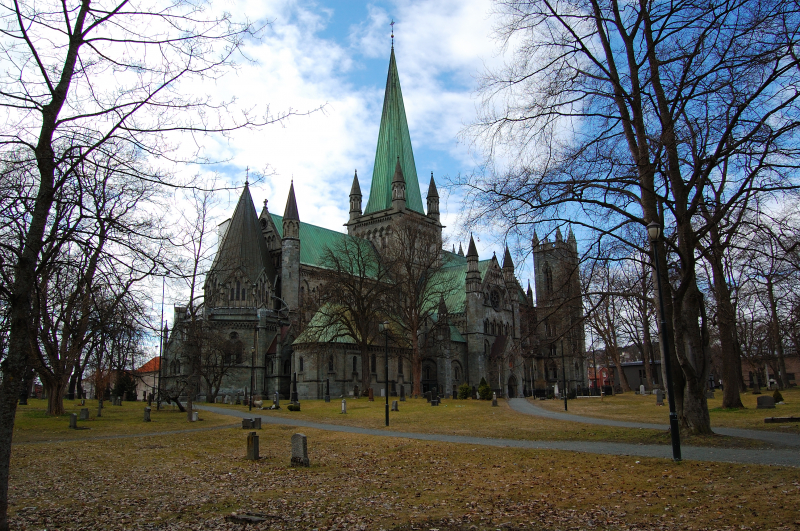
Photo: commons.wikimedia 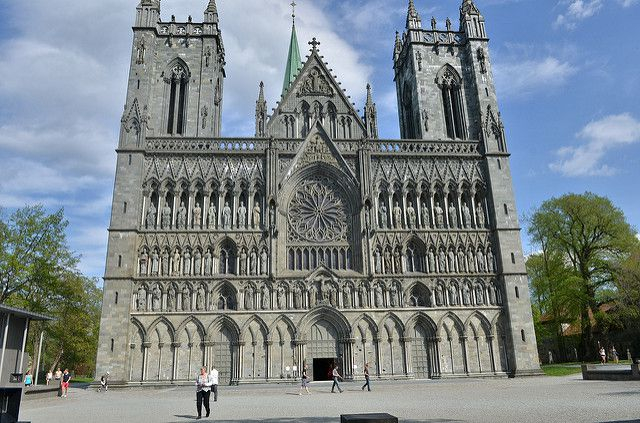
Photo: gpsmycity -
The Steilneset Memorial in Vardo, Norway's easternmost town, is a stunning major work by Louise Bourgeois and architect Peter Zumthor commemorating the 1621 trial and execution of 91 persons suspected of witchcraft. A series of witchcraft trials took place in Norway during the 17th century, with Vardo having the highest number of executions.
Several women were imprisoned and tortured in the Vardohus Fortress, accusing them of flying to meet Satan at the witches' sabbath. After being tortured, many of them confessed and were then burnt at the stake.
Vardo in Finnmark (modern-day northern Norway) had a spike in violent witchcraft trials and executions in the winter of 1662 and 1662. The individuals who were executed in all the cases were indigenous Sami.
The Steilneset Memorial installation, which was unveiled 348 years after the most renowned trials, dominates Vardo's majestic environment. The memorial, which consists of two independent buildings, was commissioned by the inhabitants of Vardo as well as many national agencies.
The first is a 410-meter-long wooden structure enclosing a fabric cocoon; the second is a square smoked glass room containing Bourgeois' artwork — a chair surrounded by flames mirrored in mirrors.
Location: Vardo, Norway
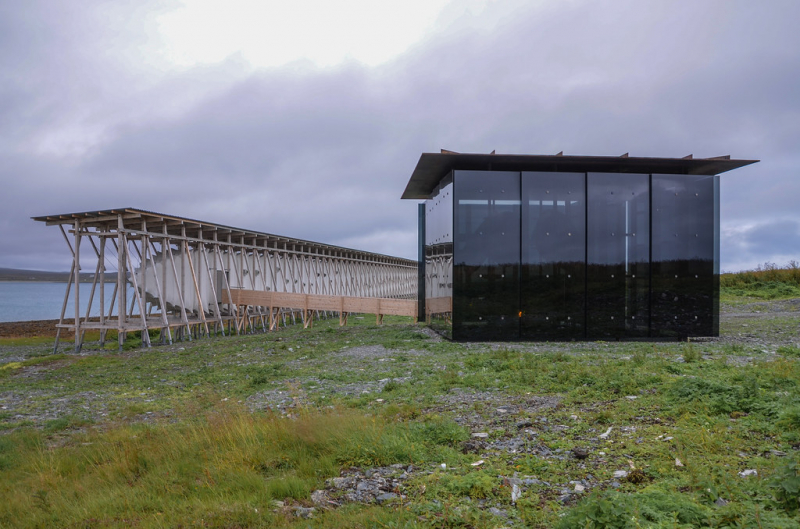
Photo: thisispaper 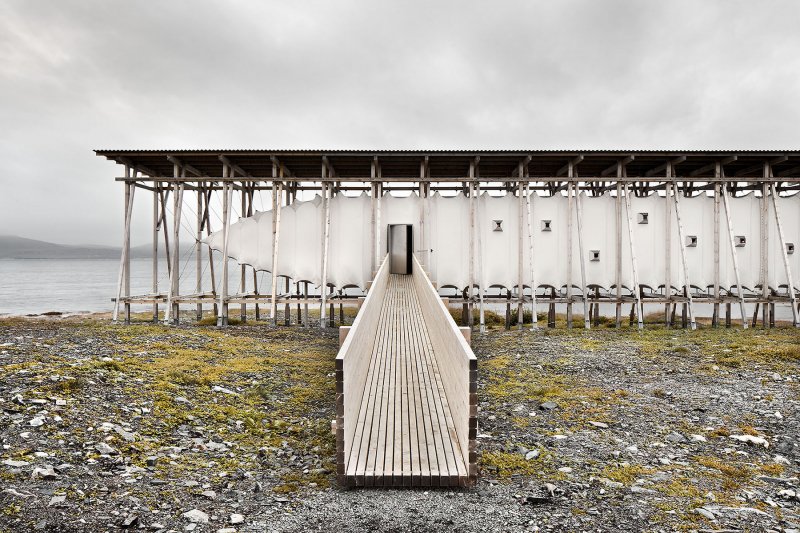
Photo: thisispaper -
Roldal Stave Church, also known as Roldal Stavkyrkje, is a beautiful wooden church in Vestland, Norway, that dates back to roughly 1250 AD. Roldal Stave Church, Norway's sole operational church of its type, continues to attract visitors today.
The Roldal Stave Church was built between 1200 and 1250 AD, and is a timber-framed church with pine pillars known as'stafr' in Old Norse. Norway's land became concentrated in the hands of the king, aristocracy, and Church during this early period, with a part of farmers' profits going to the Church.
The Roldal Stave Church has been restored to its former glory, and mass is still held there. There are still various pilgrim pathways connecting to the church for visitors interested in seeing more of the Norwegian scenery. Take a guided tour of the wooden church, which is covered with fake fabric murals and elegantly carved pews, during the summer.
It's easy to be taken back to medieval Norway on a misty day, surrounded by mountains and low-lying clouds. On July 6th, look for the church's legendary'sweating,' which occurs every year on 'Olsok,' Norway's national day of celebration.Location: Røldal, Norway
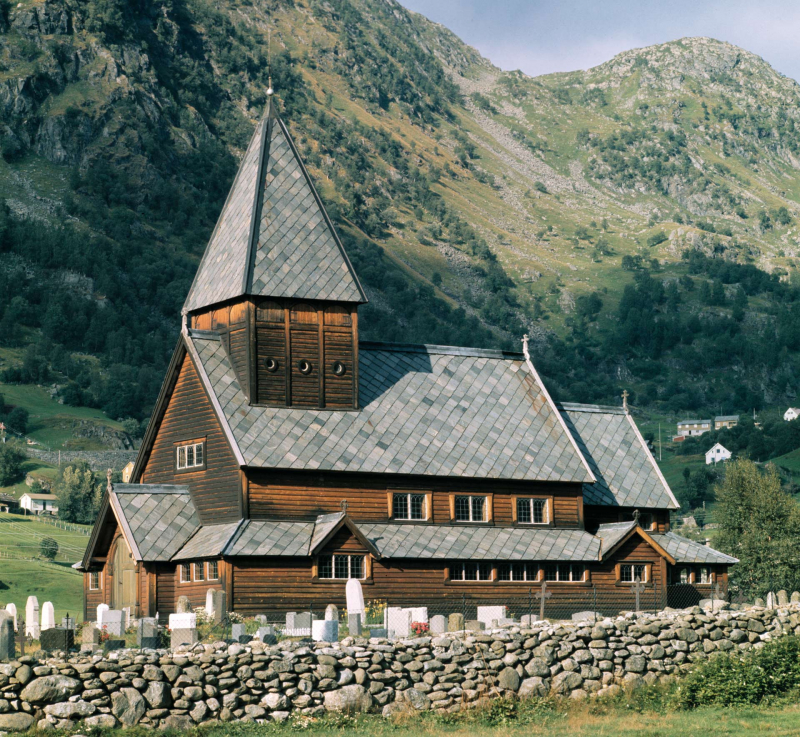
Photo: stavechurch 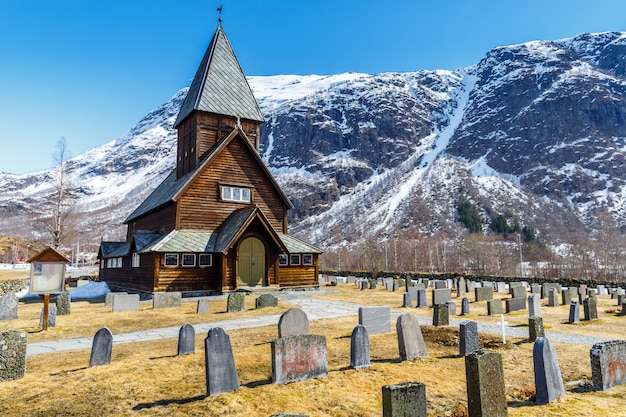
Photo: freepik -
The Rock Art of Alta is a collection of approximately 6,000 intriguing prehistoric engravings located in Finnmark, Norway's northernmost area. Some carvings date back to 4200 BC. The Rock Art of Alta is one of Norway's ten UNESCO World Heritage Sites, and one of the places where these ancient sculptures may be found has been transformed into an open-air museum.
The rock engravings were created over 5,000 years ago, when the majority of Norway's population were hunter-gatherers. People in the late Stone Age and early Metal Age saw a significant cultural shift, as they began to use metal tools in boat construction and fishing.The rock carvings were most likely created with quartz chisels pounded into harder rock — tools that were still in use after people began to utilize metal tools.
The initial engravings were discovered in 1973 at a place called Jiepmaluokta, which means 'bay of seals' in Northern Sami. Throughout the 1970s, further engravings were discovered, which were linked by a 3-kilometer system of wooden pathways.
You can visit the World Heritage Rock Art Centre or Alta Museum today, which displays object relating to the prehistoric peoples responsible for the rock art at Alta, including the indigenous Sami culture, in addition to wandering the wooden walkways and interpreting for yourself what the incredible red rock carvings might mean.Location: Finnmark, Norway
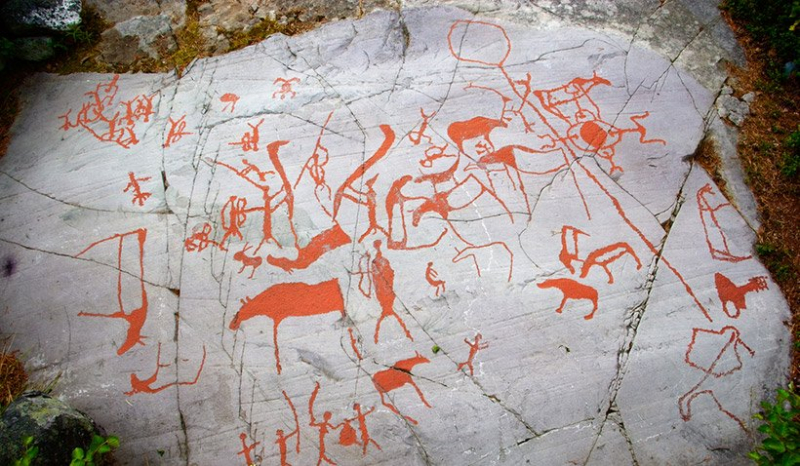
Photo: lifeinnorway 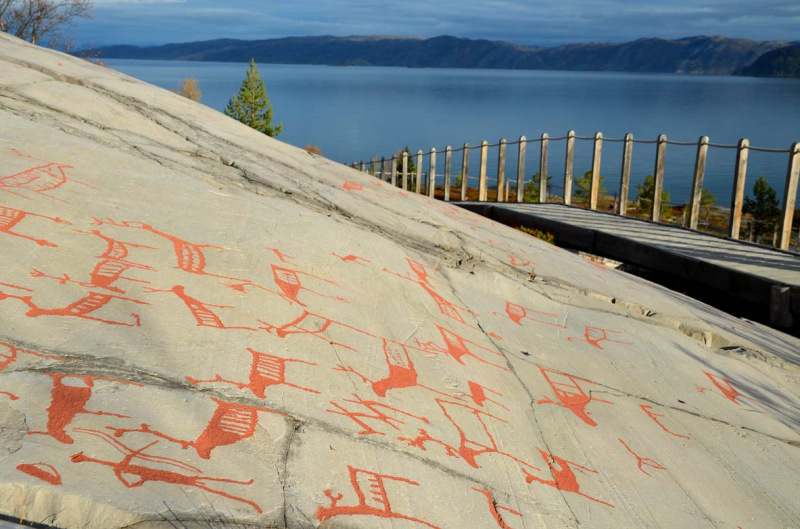
Photo: per-storemyr.net -
Bryggen, which means "the dock" in Norwegian, is a row of charming Hanseatic heritage buildings that line Bergen's Vgen harbor. Although Bergen was built in 1070, Bryggen was first designated as a UNESCO World Heritage Site in 1979. Museums, stores, restaurants, and bars now occupy the historic dock.
Bergen's Bryggen region grew to incorporate all the structures between the sea and the road leading south to Vgsbunnen after being founded in 1070. The pier was built around 1100, and the Hanseatic League's office was established at Byrggen around 1350.The structures were taken over by Hanseatic merchants and the warehouses were used to store items such as stockfish from the north and cereals from Europe as the town expanded into an increasingly significant commercial center.
Many of the Hanseatic Organization's offices were damaged in a fire in 1702, and the league soon discontinued utilizing the Bryggen premises. While the ancient structures were severely damaged by a fire in 1955, 647 medieval day-to-day runic inscriptions were discovered during the excavations.
The 300-year-old Bellgrden and the oldest and tallest building in the neighborhood, St Mary's Church, is still standing today. It is like a symbol of the port city, worthy of being named in the list of the most bYou may also witness medieval runes at the Bryggens Museum, as well as the lovely Hanseatic Museum and Schtstuene.Location: Bergen Municipality, Bergen, Norway
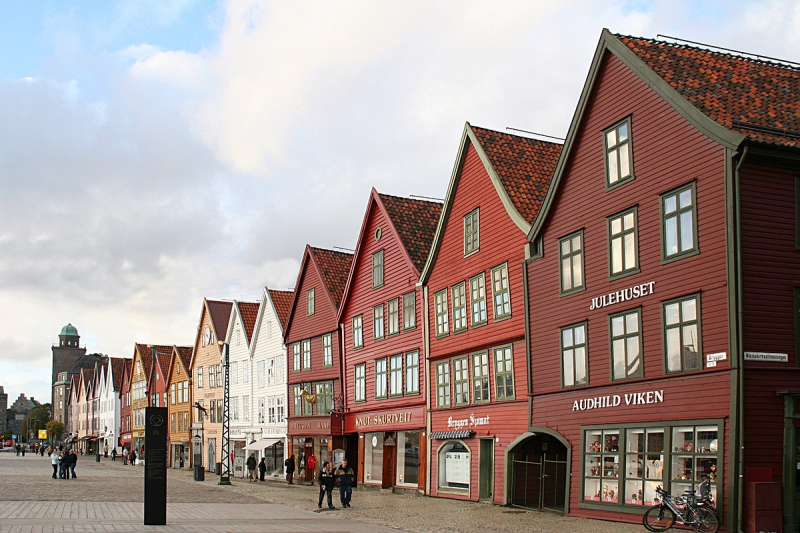
Photo: wikipedia 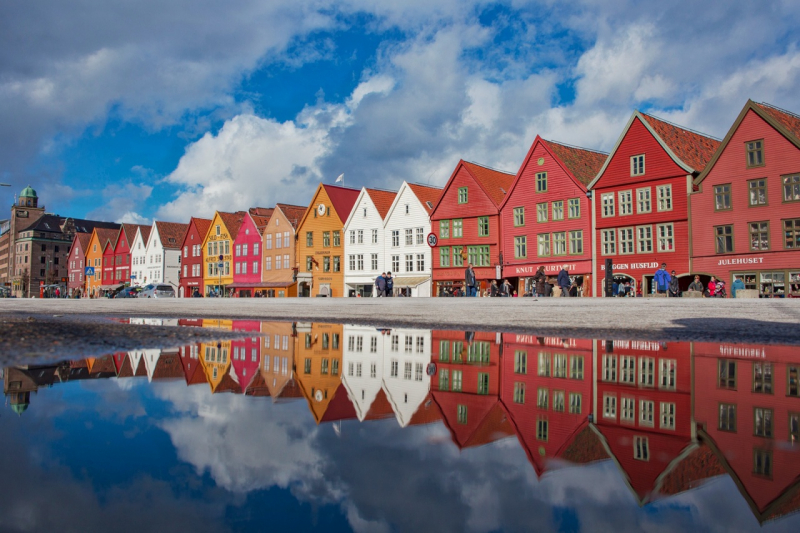
Photo: exploreronabudget












